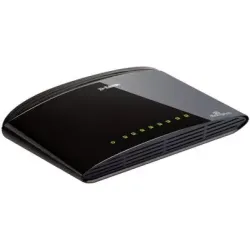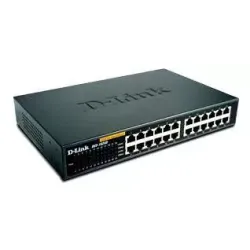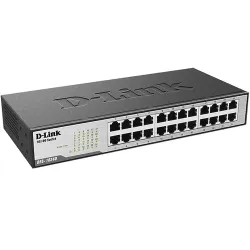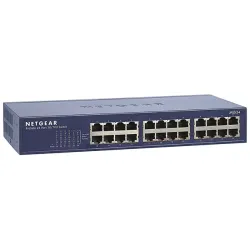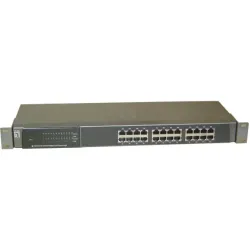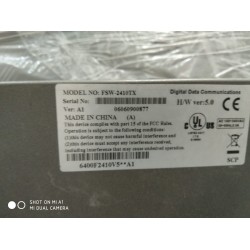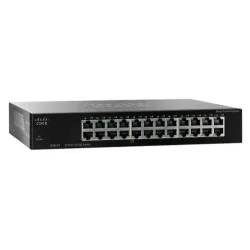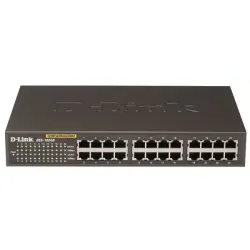The Benefits and Types of SAN Switches
Introduction of SAN Switches
A Storage Area Network (SAN) switch is a specialized network switch designed to enable communication between servers, storage devices, and other components in a SAN. SAN switches are used to create a dedicated network for storage traffic, separate from the main local area network (LAN), providing high-speed, reliable access to storage resources.
SAN switches typically have many ports and support high-speed data transfer rates, such as 16Gbps or 32Gbps, allowing for large amounts of data to be transferred quickly between storage devices and servers. They also support various protocols, including Fibre Channel (FC), Fibre Channel over Ethernet (FCoE), and iSCSI (Internet Small Computer System Interface).
SAN switches are often used in enterprise-level data centres and storage environments to provide a centralized, high-performance storage network. They can be configured to provide redundancy and failover capabilities to ensure data availability and reduce downtime. SAN switches can also be used to create storage networks for virtualized environments, allowing multiple virtual machines to access shared storage resources.
Overall, SAN switches play a critical role in providing high-speed, reliable access to storage resources in large-scale data centres and storage environments.
The key benefits of SAN switches
SAN switches offer a number of benefits over traditional networking approaches when it comes to managing storage resources. Some of the key benefits of SAN switches include:
High Performance:
SAN switches are designed to provide high-speed, low-latency connectivity between servers and storage devices. This results in faster data access and transfer speeds, enabling applications to run more efficiently.
Scalability:
SAN switches can support a large number of storage devices and servers, making them highly scalable. As storage needs grow, additional switches can be added to the network to expand capacity.
Centralized Management:
SAN switches allow for centralized management of storage resources. This makes it easier to provision storage resources, monitor performance, and perform backups and restores.
Improved Data Availability:
SAN switches can be configured to provide redundancy and failover capabilities, which help ensure that data is always available to applications.
Security:
SAN switches provide a dedicated network for storage traffic, which helps improve security by isolating storage traffic from other network traffic.
Lower Total Cost of Ownership:
While SAN switches can be expensive to purchase, they can help lower the total cost of ownership over time. By centralizing storage management and providing high performance, SAN switches can reduce the need for additional servers and storage devices, which can result in cost savings.
Types of SAN Switches
There are several types of SAN switches, each with its own characteristics and use cases. The most common types of SAN switches are:
Fibre Channel (FC) Switches:
Fibre Channel switches are the most popular type of SAN switches. They are designed to provide high-speed connectivity between servers and storage devices using the Fibre Channel protocol. FC switches are typically used in large-scale enterprise storage environments.
Fibre Channel over Ethernet (FCoE) Switches:
FCoE switches are designed to provide connectivity between Fibre Channel storage devices and Ethernet-based servers. They enable organizations to leverage their existing Ethernet infrastructure while providing high-speed connectivity to storage resources.
iSCSI Switches:
iSCSI switches are designed to provide connectivity between iSCSI-based storage devices and servers. They use the Internet Small Computer System Interface (iSCSI) protocol to transmit SCSI commands over IP networks.
InfiniBand Switches:
InfiniBand switches are designed to provide high-speed connectivity between servers and storage devices in high-performance computing (HPC) environments. They provide low-latency, high-bandwidth connectivity, making them ideal for demanding applications such as scientific computing and data analytics.
Converged Network Adapters (CNAs):
While not technically a switch, CNAs are a type of network interface card (NIC) that combines Fibre Channel and Ethernet functionality. They enable servers to access Fibre Channel storage devices over Ethernet networks, eliminating the need for a separate Fibre Channel network.
Each type of SAN switch has its own strengths and weaknesses, and the appropriate type of switch will depend on the specific needs of the organization.
The popular brands for SAN switches include Cisco, Brocade, HPE (Hewlett Packard Enterprise), Dell EMC, Huawei, And Lenovo.
A Storage Area Network (SAN) is a high-speed network that connects servers and storage devices, providing centralized storage and management of data. SAN switches are a critical component of a SAN infrastructure, enabling multiple servers and storage devices to communicate with each other over the network.
The purpose of a Storage Area Network (SAN) is to provide a high-speed network that enables multiple servers and storage devices to communicate with each other and share data. A SAN is designed to centralize storage resources and provide a more efficient and scalable way to manage data storage in an enterprise environment.
A Storage Area Network (SAN) is a specialized high-speed network that enables multiple servers and storage devices to communicate with each other and share data. There are several advantages to using a SAN in an enterprise environment.

